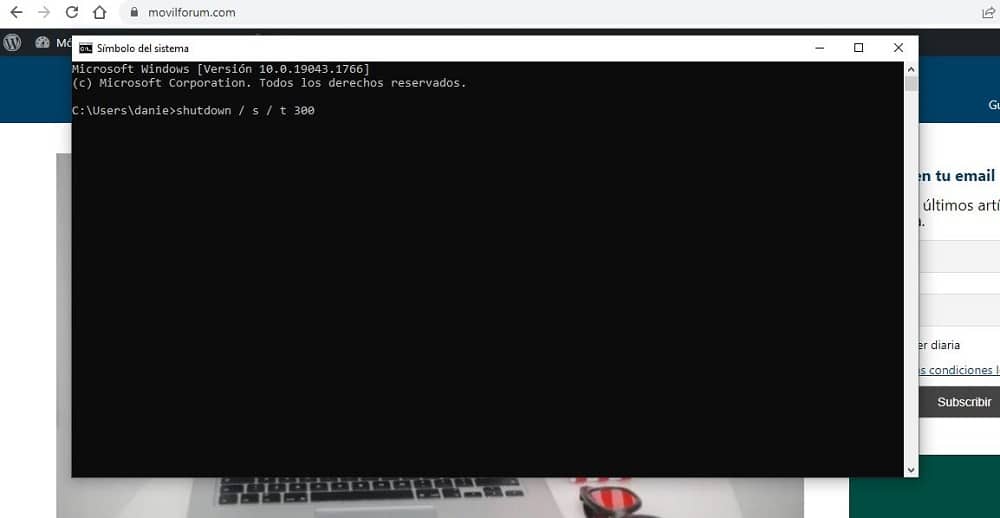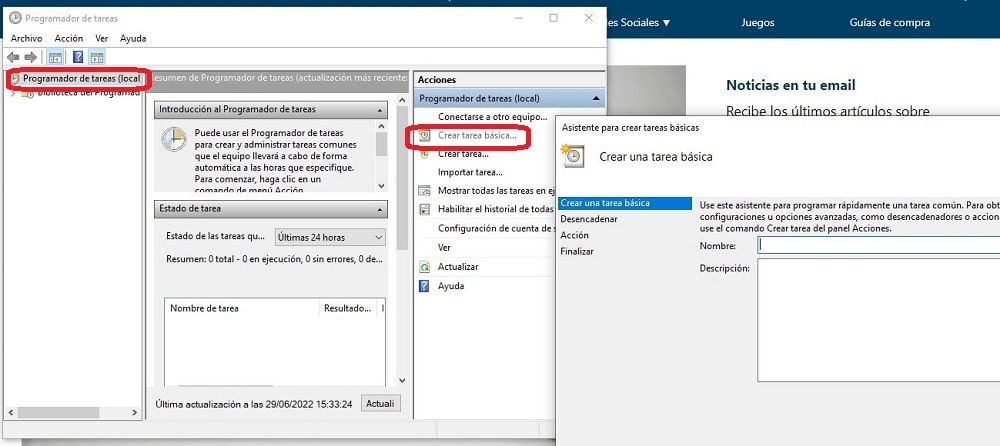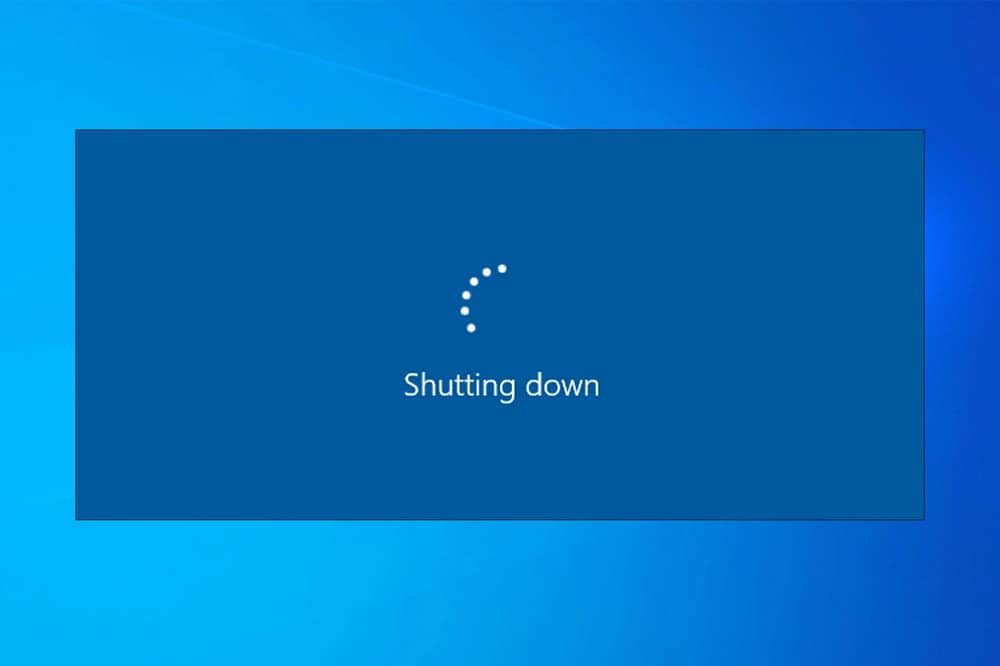
Schedule automatic shutdown Windows 10 it is one of the most useful methods to close our device without having to cancel other long-running tasks. In this brief guide we will see what are the two most practical methods to program an automatic shutdown, either for a specific occasion or following a regular schedule.
This function is very practical in certain cases. It serves, for example, to prevent our computer from continuing to consume electricity when we are no longer using it. Can also be used as security system in the event that we forget to turn it off, thus preventing anyone from accessing it and its content.
See also: How to make the computer not sleep in Windows 10
These are the two main methods we can use to schedule an automatic shutdown in Windows 10:
Method 1: Use Command Prompt

This is the easiest way to include a unique sleep timer: using the symbol of the system. These are the steps to follow to program it:
- We started the Symbol of the system from the Start menu. All you have to do is type "cmd" in the search box.
- In the box, enter the following command: shutdown /s /t 300*
- Finally, we press Enter.
(*) In this example, the value of 300 refers to the amount of time that will pass before Windows shuts down. If, for example, we wanted that time to be 5 seconds, we would write shutdown /s /t 500.
From schedule automatic shutdown windows 10 Using this method, we can now close the Command Prompt and continue using our computer. Once we stop using it, Windows will automatically shut down when the timer expires, forcing all programs to close.
Method 2: Schedule shutdown with Task Scheduler

El windows task scheduler It allows us to execute programs at a certain time. This functionality can be used in many different ways and for very different purposes. An example would be to schedule a shutdown at a certain time in the morning. In this article we will focus solely on a time-based close. This is how we should do it:
- To start we will open the Task Scheduler. It can be searched from the Start menu.
- Once opened, within the options shown in the box on the right, click on "Create basic task", assigning it, for example, the name “Shutdown” (see in the image above). Then we click the button "Following" to continue.
- The next step is to define the trigger for shutdown. You can choose between several frequencies: Daily, Weekly and Monthly. There is also the possibility to set a unique date and time. After making the selection that we prefer, we must click on "Following". (In the example that illustrates the image we have chosen the option of automatic device shutdown at 22:00 every day).
- Then we click again on "Following" to access the action configuration screen. There we must select "Start a program" and click on "Following".
- En "Program/Script", we write off. In the box titled "Add arguments" we will write /s /t plus a number to specify a shutdown delay. If we leave it at "0", there will be no delay and the timer will act immediately. If for example we write /s /t 500 it will take 5 seconds to do so.
- Finally, we will click on "Following" to save the changes. Auto power off scheduling will be enabled automatically when we click the power button. "Finalize".
In this way, we will ensure that our device automatically turns off at the agreed time, so it can keep the tasks running even if we do not use it again.
External automatic shutdown programs

The two methods that we have explained can be executed from the system itself, without the need to resort to third-party programs. This is obviously a big plus point.
However, some users and for some very specific cases, prefer use external programs to fulfill this function. Why? Some of the most common examples are the automatic shutdown when a download, an update, a task, etc. is finished. In those cases, the methods mentioned above are not going to help us much.
There are numerous programs that can take care of this type of task, we review here only two of the most recognized:
Simple Shutdown Timer
This shutdown scheduling software has several features available: shut down, restart, hibernate, sleep or log off Windows. In other words, an interesting bouquet of options to choose the one that best suits each specific case.
Link: Simple Shutdown Timer
AMPWinOFF
It can do everything that Simple Shutdown Timer does and much more. There are different shutdown modes, from choosing a precise time or after a certain time interval. Another possibility is schedule shutdown after a certain period of time without activity, that is, when the program detects that there are no keyboard or mouse movements. Or even when no CPU activity is recorded.
Link: AMPWinOFF